- HIV Medicines
- Weight Loss
- Naltrexone
- Anti Emetic
- Neuropathic Pain
- Mens Health
- Hair Loss
- Pain Relief
- HCG Injections
- Quit Smoking
- Pharmaceutical Vaccine
- Best Selling Products
- Anti Viral
- Bimatoprost
- Antibiotics
- Women's Health
- Cetaphil
- Botulinum
- Diabetes
- Human Albumin
- Anti Malarial
- Dermal fillers
- Chemical Peels
- Nephrology Segment
- Kidney / Liver Care
- Anti Cancer
- Altus Product's
- Pharmaceutical Products
- Anti Fungal
- Hepatitis
- Beauty & Skin Care
- Asthma
- Modafinil
- Urology Segment
- Thyroid Care
- Armodafinil
- Anti-Cancer
- Armodafinil
- Bimatoprost
- Botulinum
- Dermal Fillers
- Hepatitis
- Mens-health
- Modafinil
- Naltrexone
- ANTI EMETIC
- Altus Product’s
- Anti Fungal
- Anti Malarial
- Anti Viral
- Antibiotics
- Asthma
- Beauty & Skin Care
- Cetaphil
- Chemical Peels
- Diabetes
- Hair Loss
- HCG Injections
- HIV Medicines
- Human Albumin
- Kidney / Liver Care
- Neuropathic Pain
- Pain Relief
- Pharmaceutical Products
- Pharmaceutical Vaccine
- Quit Smoking
- Thyroid Care
- Weight Loss
- Women’s Health
- HIV Medicines
- Weight Loss
- Naltrexone
- Anti Emetic
- Neuropathic Pain
- Mens Health
- Hair Loss
- Pain Relief
- HCG Injections
- Quit Smoking
- Pharmaceutical Vaccine
- Best Selling Products
- Anti Viral
- Bimatoprost
- Antibiotics
- Women's Health
- Cetaphil
- Botulinum
- Diabetes
- Human Albumin
- Anti Malarial
- Dermal fillers
- Chemical Peels
- Nephrology Segment
- Kidney / Liver Care
- Anti Cancer
- Altus Product's
- Pharmaceutical Products
- Anti Fungal
- Hepatitis
- Beauty & Skin Care
- Asthma
- Modafinil
- Urology Segment
- Thyroid Care
- Armodafinil
No products in the cart.
Return To Shop$32.31 – $77.95Price range: $32.31 through $77.95
Glycomet-GP 0.5 Tablet (Glimepiride 0.5mg / Metformin 500mg)
Glycomet-GP 0.5 Tablet SR belongs to a category of medicines known as anti-diabetic drugs. It is a combination of two medicines used to treat type 2 diabetes mellitus in adults. It helps control blood sugar levels in people with diabetes
Have questions?
Call : +91 9002 1002 33
Glycomet-GP 0.5 Tablet (Glimepiride 0.5mg / Metformin 500mg)
| COUNTRY OF ORIGIN | India |
|---|---|
| DOSAGE FORM | Tablets |
| GENERIC NAME | Glimepiride |
| INDICATION | Treatment of Type 2 diabetes mellitus |
| PACKAGING | 10 tablets in 1 strip |
| MANUFACTURER | USV Ltd |
| COMPOSITION | Glimepiride (0.5mg) + Metformin (500mg) |
PRODUCT INTRODUCTION
Glycomet-GP 0.5 Tablet SR belongs to a category of medicines known as anti-diabetic drugs. It is a combination of two medicines used to treat type 2 diabetes mellitus in adults. It helps control blood sugar levels in people with diabetes, glycomet-GP 0.5 Tablet SR should be taken with food. Take it regularly at the same time each day to get the most benefit. Your doctor will decide what dose is best for you and this may change from time to time according to how it is working according to your blood sugar levels.
Keep taking this medicine, even if you feel well or your blood sugar levels are controlled. If you stop it without consulting your doctor, your blood sugar levels could rise and put you at risk of kidney damage, blindness, nerve problems, and loss of limbs.
Remember that it is only part of a treatment program that should also include a healthy diet, regular exercise, and weight reduction as advised by your doctor. Your lifestyle plays a big part in controlling diabetes.
The most common side effect of Glycomet-GP 0.5 Tablet SR is low blood glucose levels (hypoglycemia). Make sure you recognize the signs of having low blood glucose levels, such as sweating, dizziness, headache, and shaking, and know how to deal with it. To prevent this, it’s important to have regular meals and always carry a fast-acting source of glucose such as sugary food or fruit juice with you.
Drinking alcohol can also increase your risk of low blood sugar levels and should be avoided. Other side effects that may be seen on taking this medicine include taste changes, nausea, diarrhea, stomach pain, headache, and upper respiratory tract infection. Some people may find that they put on weight with this medicine.
You should not take it if you have type 1 diabetes mellitus, if you have diabetic ketoacidosis (high levels of acid in your blood), or if you have severe kidney or liver disease. Before taking this medicine, tell your doctor if you have ever had heart disease.
It may not be suitable. Pregnant or breastfeeding women should also consult their doctor before taking it. Your blood sugar levels should be checked regularly and your doctor may also advise blood tests to monitor your blood cell counts and liver function.
“Subtle Power for Blood Sugar Balance: Unveiling Glimepiride 0.5mg and Metformin 500mg Synergy in Diabetes Management”
This heading emphasizes the combined impact of the lower dose of Glimepiride at 0.5mg and Metformin at 500mg in achieving subtle yet effective blood sugar control. The explanation would delve into how these micro-doses contribute to a nuanced approach, with Glimepiride stimulating insulin release and Metformin improving insulin sensitivity, showcasing their synergistic role in diabetes management with a focus on balance.
2. “Precision in Miniature: Navigating Glimepiride 0.5mg and Metformin 500mg for Tailored Glycemic Control”
Here, the discussion centers on the precision involved in selecting the dosages of Glimepiride (0.5mg) and Metformin (500mg) to achieve tailored and precise glycemic control. The explanation would explore the rationale behind these specific doses, considering the mechanisms of each medication, and highlight the importance of a carefully calibrated strategy that balances optimal efficacy with minimizing potential side effects. It underscores the significance of a precise approach in achieving successful diabetes management with smaller doses.
Precision Care: Individualizing Treatment with Glimepiride Metformin
Delve into the concept of precision care in diabetes management, focusing on tailoring treatment plans to the unique needs of each individual. Explore how the combination of glimepiride and metformin can be customized to optimize outcomes for specific patients.
Signs and Symptoms of Type 2 Diabetes Mellitus: Cracking the Code of Early Diabetes
Delve into the process of cracking the code associated with early signs of Type 2 Diabetes Mellitus. Explore how understanding and interpreting this code is crucial for recognizing diabetes in its initial stages.
Diabetes Mellitus Medications: Navigating Medication Strategies for Improved Diabetes Care
Explore strategic approaches to medication use for improved diabetes care. This guide provides actionable strategies for optimizing the impact of medications, contributing to better health outcomes and improved diabetes management.
Harmony in Healing: Drug for Diabetes Mellitus Type 2 Unveiled
Unveiling the harmonious aspects of healing inspired by the drug, this exploration discusses its multifaceted approach to healing in the context of Diabetes Mellitus Type 2.
“Meds for Diabetes Mellitus Type 2: Medication Mastery and Comprehensive Wellness”
Achieve medication mastery as a pathway to comprehensive wellness in the context of Type 2 Diabetes. This guide explores how mastering medications goes beyond glucose control, encompassing various facets of wellness to contribute to an overall healthier and more fulfilling life.
Medications for Diabetes Mellitus Type 2: Medication Adjustment Strategies for Special Populations
– Special populations may require unique medication adjustments. Join us as we explore strategies for tailoring medication plans to the specific needs of special populations, such as pregnant individuals, seniors, and those with comorbid conditions in type 2 diabetes.
Pharmacoeconomic Considerations in Treatment of Type 2 Diabetes Mellitus
Addressing economic aspects of diabetes care, this section explores pharmacoeconomic considerations in the treatment of Type 2 Diabetes Mellitus. By evaluating the cost-effectiveness of different interventions, the discussion aims to inform healthcare decision-making and resource allocation.
DM Type 2 Medications: Navigating Medication Options for Healthier Living
Navigate through diverse medication options designed to promote healthier living for individuals managing Type 2 Diabetes. Explore how these options contribute to an improved quality of life and overall health.
USES OF GLYCOMET-GP TABLET SR
- Treatment of Type 2 diabetes mellitus
BENEFITS OF GLYCOMET-GP TABLET SR
In Treatment of Type 2 diabetes mellitus
Lowering blood glucose levels is an essential part of managing diabetes. If you can control the level you will reduce the risk of getting any of the serious complications of diabetes such as kidney damage, eye damage, nerve problems, and loss of limbs. Taking this medicine regularly along with proper diet and exercise will help you live a normal, healthy life.
SIDE EFFECTS OF GLYCOMET-GP TABLET SR
Common side effects of Glycomet-GP
- Hypoglycemia (low blood glucose level)
- Headache
- Nausea
- Diarrhea
- Flatulence
HOW TO USE GLYCOMET-GP TABLET SR
HOW GLYCOMET-GP TABLET SR WORKS
SAFETY ADVICE

Alcohol

Pregnancy

Breast feeding

Driving

Kidney
Use of Glycomet-GP 0.5 Tablet SR is, however, not recommended in patients with severe kidney disease. Regular monitoring of kidney function test is advisable while you are taking this medicine.

Liver
Glycomet-GP 0.5 Tablet SR is generally started with low dose in patients with mild to moderate liver disease and its use is not recommended in patients with severe liver disease.
WHAT IF YOU FORGET TO TAKE GLYCOMET-GP TABLET SR?
| Pack Size | 100 Tablet/s, 200 Tablet/s, 300 Tablet/s, 400 Tablet/s |
|---|
3 reviews for Glycomet-GP 0.5 Tablet (Glimepiride 0.5mg / Metformin 500mg)
Related products
Cabgolin Tablet (Cabergoline)
From: $50.65Decarb 500 Injection (Dacarbazine)
From: $171.43Hepcvir L Tablet | Ledipasvir | Sofosbuvir
From: $256.41Glioz 100mg Capsule Temozolomide
From: $148.57Myezom Injection (Bortezomib)
From: $188.31Sofab LP Tablet | Ledipasvir | Sofosbuvir
From: $256.41Resof 400mg Tablet | Sofosbuvir 400mg
From: $179.49People also bought
-

Benoquin 40 Cream | Monobenzone 40%
From: $154.77 -
 From: $38.38
From: $38.38 -
 From: $40.05
From: $40.05 -

Aziderm 10% Cream 15gm | Azelaic Acid 10%
From: $39.26
Our Services
Shipping
Shipping at Discounted Price
Money Returns
Return Within 30 Days
Secure Payment
Safe & Secure Payment
Support 24/7
Contact 24 Hours Day
From: $46.75

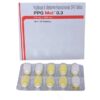
From: $51.82
- Anti-Cancer
- Armodafinil
- Bimatoprost
- Botulinum
- Dermal Fillers
- Hepatitis
- Mens-health
- Modafinil
- Naltrexone
- ANTI EMETIC
- Altus Product’s
- Anti Fungal
- Anti Malarial
- Anti Viral
- Antibiotics
- Asthma
- Beauty & Skin Care
- Cetaphil
- Chemical Peels
- Diabetes
- Hair Loss
- HCG Injections
- HIV Medicines
- Human Albumin
- Kidney / Liver Care
- Neuropathic Pain
- Pain Relief
- Pharmaceutical Products
- Pharmaceutical Vaccine
- Quit Smoking
- Thyroid Care
- Weight Loss
- Women’s Health



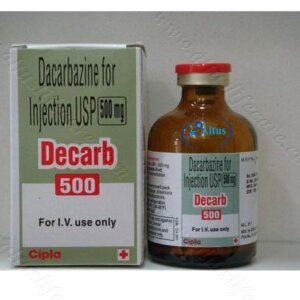
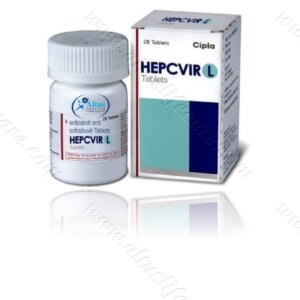
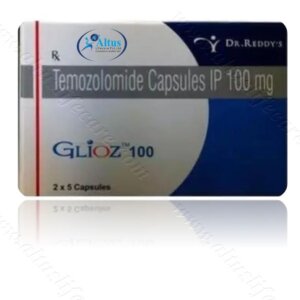
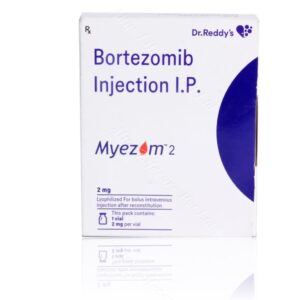




Braelyn (verified owner) –
“Premium product quality and lightning-speed shipping – a great experience!”
Megan (verified owner) –
“The meticulous packaging ensures the product’s safety, and the quality is beyond expectations. Highly recommended!”
Maia (verified owner) –
Type 2 diabetes has inspired me to explore the benefits of mindfulness-based practices, such as guided imagery or visualization, as tools for stress management and overall well-being.